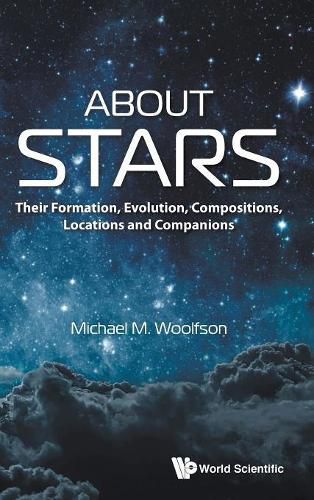Readings Newsletter
Become a Readings Member to make your shopping experience even easier.
Sign in or sign up for free!
You’re not far away from qualifying for FREE standard shipping within Australia
You’ve qualified for FREE standard shipping within Australia
The cart is loading…






‘Each chapter ends with up to six student problems. There is full set of worked answers at the end of the book but modern students might not be enlightened by the samples of Fortran code, probably meant to illustrate how realistic calculations might be made.'Contemporary PhysicsOn a clear and moonless night, especially in remote areas such as deserts, myriads of points of light cover the sky. The great majority of them are stars, many like the Sun, but so far away that they can only be seen as point sources of light. The problem faced by astronomers is to find their properties and distances, just from the light they emit. This is done by using the knowledge of science, mainly physics, acquired from small-scale experiments carried out on Earth. However, the stars themselves are laboratories in which matter behaves in ways that cannot be reproduced on Earth so, in finding out about stars, we complement scientific knowledge gained from earthbound experimentation.This book describes the means - some very ingenious - by which to explore the properties, locations and planetary companions of stars, and provides a sound foundation for further study.
$9.00 standard shipping within Australia
FREE standard shipping within Australia for orders over $100.00
Express & International shipping calculated at checkout
‘Each chapter ends with up to six student problems. There is full set of worked answers at the end of the book but modern students might not be enlightened by the samples of Fortran code, probably meant to illustrate how realistic calculations might be made.'Contemporary PhysicsOn a clear and moonless night, especially in remote areas such as deserts, myriads of points of light cover the sky. The great majority of them are stars, many like the Sun, but so far away that they can only be seen as point sources of light. The problem faced by astronomers is to find their properties and distances, just from the light they emit. This is done by using the knowledge of science, mainly physics, acquired from small-scale experiments carried out on Earth. However, the stars themselves are laboratories in which matter behaves in ways that cannot be reproduced on Earth so, in finding out about stars, we complement scientific knowledge gained from earthbound experimentation.This book describes the means - some very ingenious - by which to explore the properties, locations and planetary companions of stars, and provides a sound foundation for further study.